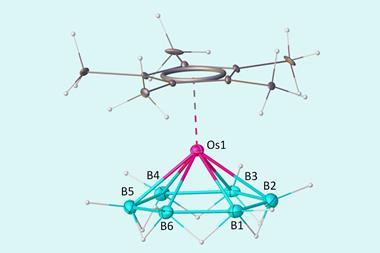This webinar gives an introduction to the relevance of materials in catalysis, the challenges in their synthesis and their characterisation at atomic level.
The speakers present a protocol to determine the location of different types of metallic species within the zeolite framework and the quantification of the metal-metal (Pt-Sn) interactions. They then explore experimental issues, analysis of the experimental images using AI techniques based on clustering, and the use of special holders – along with image simulations to help you gain a better understanding.
By watching this webinar recording you will learn:
- Advanced catalyst characterisation methods using TEM
- Why STEM iDPC greatly benefits the imaging of beam sensitive porous catalyst materials
- The challenges and solutions in zeolite based catalysts synthesis and characterisation

Speaker: José Juan Calvino Gamez, professor of inorganic chemistry, University of Cádiz

Speaker: Miguel Lopez-Haro, Assistant professor of inorganic chemistry, University of Cádiz

Thermo Fisher Scientific is the world leader in serving science. Our mission is to enable our customers to make the world healthier, cleaner and safer. We help our customers accelerate materials science research, solve complex analytical challenges and increase productivity.
We supply innovative solutions for electron microscopy and microanalysis, including SEMs, TEMs and DualBeam™ FIB/SEMs combined with software suites to take customers from questions to usable data by combining high-resolution imaging with physical, elemental, chemical and electrical analysis across scales and modes—through the broadest sample types.
References
These references were given in the presentation, reproduced here for your convenience:
- Tutorial: structural characterization of isolated metal atoms and subnanometric metal clusters in zeolites; L Liu, M Lopez-Haro, JJ Calvino, A Corma; Nature Protocols16 (2021), 1871-1906
- Atomic-level understanding on the evolution behavior of subnanometric Pt and Sn species during high-temperature treatments for generation of dense PtSn clusters in zeolites; L Liu, M Lopez-Haro, CW Lopes, DM Meira, P Concepcion, JJ Calvino, A. Corma; Journal of Catalysis391, (2020) 11-24
- Structural modulation and direct measurement of subnanometric bimetallic PtSn clusters confined in zeolites; L Liu, M Lopez-Haro, CW Lopes, S Rojas-Buzo, P Concepcion, A. Corma; Nature Catalysis3 (2020), 628-638
- Regioselective Generation of Single-Site Ir Atoms and their Evolution into Stabilized Subnanometric Ir Clusters in MWW Zeolite; A Corma, L Liu, M Lopez-Haro, DM Meira, P Concepcion, JJ Calvino; Angewandte Chemie International ed. in English (2020)
- Regioselective generation and reactivity control of subnanometric platinum clusters in zeolites for high-temperatura catalysis; L Liu, M Lopez-Haro, CW Lopes, C Li, P Concepcion, L Simonelli, A. Corma; Nature materials18 (2019), 866-873

















